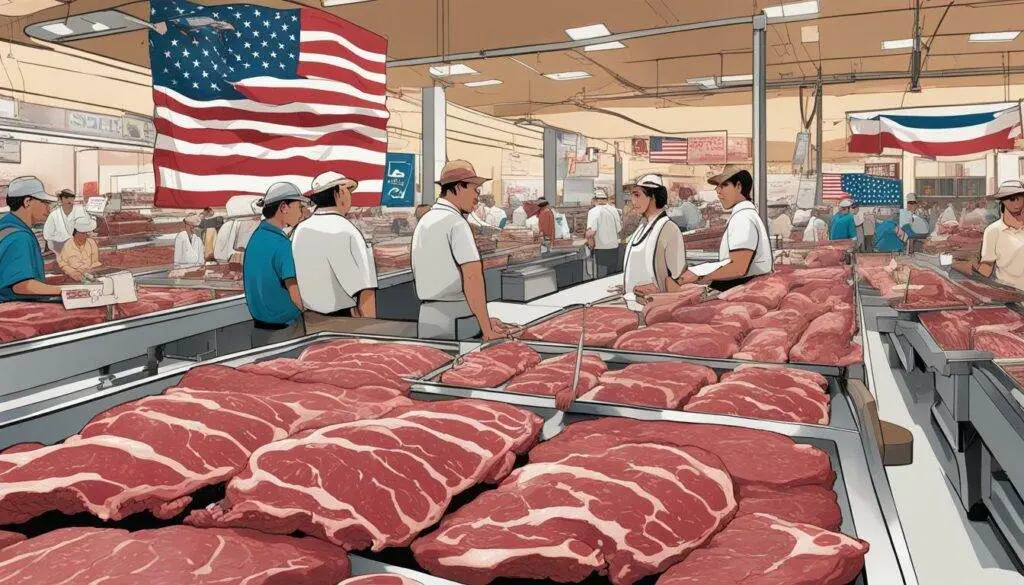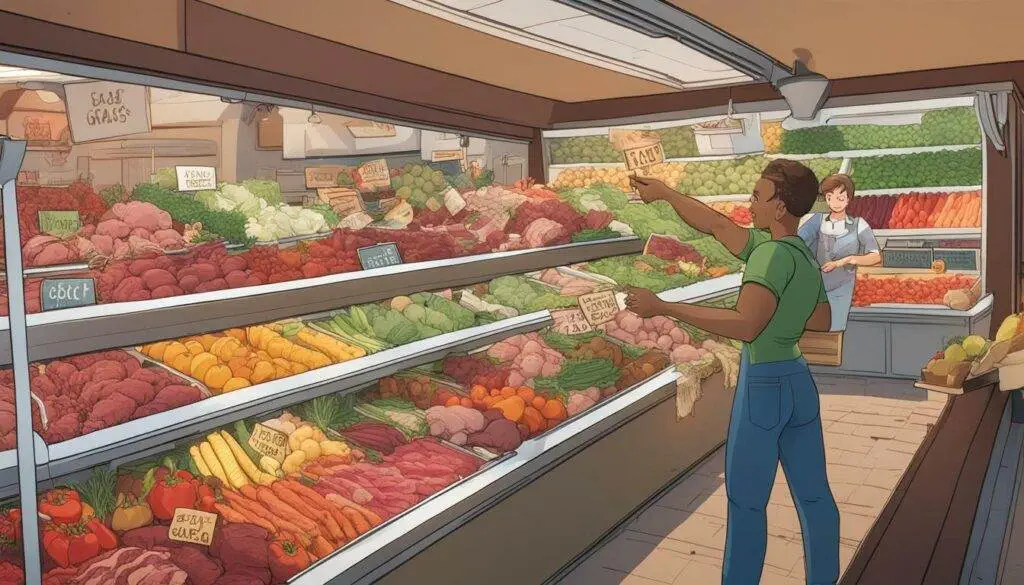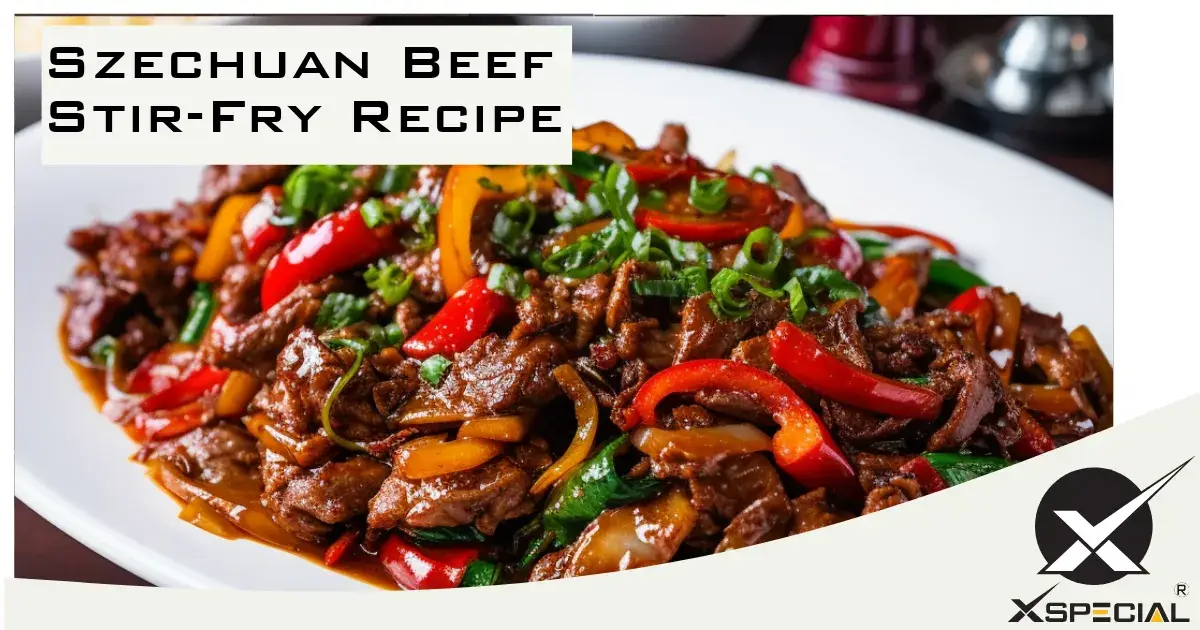Welcome to our article on buying beef in the USA. Making informed decisions when purchasing beef is crucial for ensuring quality and value for your family. With so many options available, it can be overwhelming to know where to start. This article will guide you through buying meat, from understanding the market to identifying and selecting high-quality beef. We will also provide tips on cooking and handling beef to achieve the perfect meal. Let’s get started!
Key Takeaways:
Buying high-quality beef requires making informed decisions.
Understanding the USA beef market and identifying quality beef is essential.
Choosing the best place to buy beef and considering budget and value for money are important factors.
Storing, handling, and cooking beef properly are crucial for maintaining quality and achieving the perfect meal.
Understanding the USA Beef Market
Before deciding which beef to buy, it’s important to understand the US beef market. The USA produces some of the highest quality beef in the world, and there are different suppliers and providers available, each offering various types of beef cuts.
There are two main types of beef typically found in the USA market: grass-fed and grain-fed. Grass-fed beef is sourced from cattle that feed solely on grass, while grain-fed beef is sourced from cattle that consume a combination of grass and grain. Grass-fed beef is known for its leaner meat and higher levels of beneficial nutrients such as omega-3 fatty acids, while grain-fed beef is known for its marbling and tenderness.
The USA beef market offers various choices, from premium cuts like ribeye and tenderloin to more affordable options like ground beef and stew meat. It’s important to assess your needs and preferences before making a decision and consider the availability and quality of different cuts in your local market.
Supplier | Description |
|---|---|
Big Box Retailers | These retailers typically offer a wide range of beef cuts at affordable prices. However, the quality and freshness of the beef may not always be guaranteed. |
Local Butchers | Shopping at a local butcher shop allows you to support small businesses and often ensures higher quality, fresher meat. Local butchers may also have a more comprehensive selection, including specialty cuts. |
Online Suppliers | Online suppliers provide the convenience of shopping from home and may offer a more comprehensive selection of beef cuts. However, it’s important to carefully research the supplier’s reputation and shipping policies to ensure the safety and quality of the product. |
Understanding the beef market can help you make informed decisions when buying beef in the USA. Whether you choose grass-fed or grain-fed, premium cuts or affordable options, it’s important to prioritize quality and freshness to ensure a delicious and satisfying meal for you and your family.

Identifying Quality Beef
Identifying high-quality beef is essential for making informed decisions when buying beef in the USA. The following factors can help you determine whether the beef is of good quality:
Factor | What to Look for |
|---|---|
Color | The color of the meat should be a bright, cherry red color. Avoid meat that is brown or gray. |
Marbling | Marbling refers to the small streaks of fat within the meat. Look for meat with consistent marbling throughout, as it provides flavor and tenderness when cooked. |
Texture | The texture of the meat should be firm but not tough. Press the meat with your finger; if the meat bounces back quickly, then it’s fresh. |
Smell | The meat should have a clean, fresh smell. Any unpleasant or sour odors indicate that the meat is spoiled. |
In addition to these factors, choosing fresh beef for sale is also important. Look for beef that has been recently cut and not sitting in the packaging for too long. You can also ask the butcher or seller about the age and source of the meat to ensure that it’s fresh and high-quality.
Remember: buying high-quality beef may cost more, but it’s worth it for the flavor and nutrition. Look for beef that meets these quality criteria to ensure you get the best value for your money.
Where to Buy Quality Beef
When looking for high-quality beef in the USA, several options can consider your needs and preferences before making a purchase. Here are some of the best places to buy quality beef:
Local Butchers: Many local butchers offer fresh, locally sourced beef. This locally sourced you to support option businesses and get to know your butcher, who can advise on the best beef cuts for your needs.
Supermarkets: Most supermarkets offer a range of beef products, from standard cuts to premium options. It’s important to check the freshness of the meat and any labeling or certifications before making a purchase.
Online Platforms: Several online platforms offer beef products, often with the convenience of home delivery. It’s important to research the forum and read reviews before purchasing.
Before making a decision, consider the advantages and disadvantages of each option. Local butchers may offer personalized service with limited selection and higher prices. Supermarkets may have more options but may sacrifice quality for quantity. Online platforms may be convenient but may have shipping fees and the potential for mishandling the product.

When buying beef, consider the freshness of the product. Look for meat with a bright red color and avoid any meat that appears brown or discolored. Check the “sell-by” date and ensure you can consume the meat before it expires. If you are buying pre-packaged meat, check for any tears or holes in the packaging, which can indicate exposure to bacteria.
Ultimately, the best place to buy quality beef depends on your needs and preferences. By considering the options available and researching, you can find the best value for your money and ensure a delicious and satisfying meal.
Understanding Beef Labels and Certifications
When shopping for beef, you’ll often come across labels and certifications indicating the quality and production methods of the meat. Understanding these labels can help you make informed decisions and choose the best beef for your needs.
Here are some standard labels and certifications you may encounter when buying beef in the USA:
Label/Certification | What it means |
|---|---|
Grass-Fed | Beef comes from cattle fed a grass and forage diet throughout their lives. This can lead to leaner, healthier meat. |
Organic | Beef is produced without synthetic fertilizers, pesticides, or other chemicals. The animals must also have access to the outdoors and be fed organic feed. |
Natural | Beef that is minimally processed and free from preservatives, artificial flavors, and colors. It may also mean the animals were raised without antibiotics or growth hormones. |
Certified Angus Beef | A brand that guarantees beef comes from Angus cattle and meets specific quality standards, such as marbling and age. |
These labels and certifications can help you choose beef that meets your personal preferences and ethical standards. For example, if you’re looking for high-quality, premium beef cuts, you may want to look for the Certified Angus Beef label. On the other hand, if you’re concerned about the environmental impact of your food choices, you may prefer to look for grass-fed or organic beef.
However, it’s important to note that not all labels and certifications are regulated by the government, and some may be misleading or vague. Do your research and choose reputable sources to ensure you’re getting what you pay for.
Look for beef with multiple labels or certifications to ensure the highest quality and best production practices.

Considering Budget and Value for Money For Buy Meat
When buying beef in the USA, it’s important to consider your budget and get the best value for your family. Here are some tips to help you:
Buy in bulk: Purchasing a large quantity of beef can save you money per pound. You can freeze the meat and use it in future meals.
Compare prices: Find the best deals at different supermarkets or online platforms.
Consider alternative cuts: Premium beef cuts like ribeye or tenderloin can be expensive. Look for cheaper cuts like chuck or sirloin that can still be delicious when cooked properly.
Remember that buying quality beef is an investment in your health and enjoyment; it doesn’t always have to break the bank. With some smart shopping, you can get the best value for your money.
Choosing the Right Meat for Your Budget
When shopping for beef, it’s important to consider the price per pound and how it fits your budget. Different types of meat and cuts can vary in price, so it’s important to choose the right option for your needs:
Beef Type | Approximate Price Range |
|---|---|
Conventional beef | $3-$8 per pound |
Grass-fed beef | $6-$12 per pound |
Organic beef | $8-$15 per pound |
Remember that while grass-fed or organic beef may be more expensive, it can be worth it for its nutritional benefits and flavor. Ultimately, the choice is yours, depending on your budget and preferences.
Tips for Buying Grass-Fed Beef
If you want the healthiest and most sustainable beef option, buying grass-fed beef is the way to go. But how do you know you are getting quality grass-fed meat? Here are some tips to help you make an informed decision:
Do your research: Look for local farms that raise grass-fed cattle. You can also check the labels at your local grocery store or online for credible sources.
Look for certifications: The American Grassfed Association and the USDA have certifications that ensure the quality of grass-fed beef. Look for these certifications on the packaging.
Check the color: Grass-fed beef is typically leaner and has a brighter red color than conventionally raised beef. Avoid beef that has a dull or brownish color.
Check for marbling: Although grass-fed beef is leaner, it should still have some marbling for the best flavor. Look for beef that has thin streaks of fat running through the meat.
Consider the price: Grass-fed beef is typically more expensive than conventionally raised beef, but it’s important to consider the value for your family’s health and the environment.

“Grass-fed beef is a healthier and more sustainable option. Do your research, look for certifications, check the color and marbling, and consider the price when buying grass-fed beef.”
Exploring Different Cuts of Meat
When purchasing beef, choosing the right cut can make all the difference in taste and tenderness. Here are some of the most popular premium beef cuts:
Cut | Description |
|---|---|
Ribeye | Known for its marbling, ribeye is a tender and juicy cut ideal for grilling or pan-searing. |
Tenderloin | One of the most tender beef cuts, tenderloin is lean and flavorful. It is perfect for roasting or grilling. |
Sirloin | Sirloin is a versatile cut that can be cooked in various ways, including grilling, broiling, and pan-searing. It is known for its robust flavor. |
When selecting a beef cut, remember that the cooking method can also make a big difference in the final dish. For example, tougher cuts like chuck or brisket can be made tender through slow-cooking methods like braising.
Shopping Locally for Beef Cuts
Shopping locally is an excellent option if you’re looking for the freshest and highest quality beef. By supporting local farmers and businesses, you can often find fresh beef for sale that is not only delicious but also more sustainable and ethically sourced. Here are some tips for finding and connecting with local beef providers:
Search online for farmers’ markets or local meat providers in your area. Many small farmers and businesses may not have a website, so it’s important to ask around and do some research to find them.
Ask for recommendations from friends, family, or neighbors. They may have connections to local farmers and can provide valuable insights into the quality of their beef.
Visit a local farm or butcher shop to see the animals and facilities firsthand. This can give you a better idea of the conditions in which the animals are raised and how the beef is processed.
Consider joining a community-supported agriculture (CSA) program regularly delivers locally sourced meat and other farm-fresh products. This can be a convenient and cost-effective way to support local and access high-quality meat.
By shopping for support, you can enjoy the freshest and most delicious meat, help your local community, and promote sustainable practices. So go ahead and give it a try!

Tips for Storing and Handling Meat Products
Proper storage and handling of beef are crucial for maintaining its quality and ensuring food safety. Here are some tips to help you store and handle beef:
Tip | Explanation |
|---|---|
Refrigerate promptly | Raw beef should be refrigerated at temperatures between 33°F and 40°F. Make sure to store it in the coldest part of your refrigerator and use it to store purchases. |
Wrap it properly | Wrap your beef tightly in plastic wrap or aluminum foil before refrigerating it to prevent air from entering and bacteria from multiplying. Make sure to remove as much air as possible. |
Freeze if necessary | If you don’t use your beef within 2-4 days, consider freezing it. Wrap it in plastic wrap or aluminum foil and place it in a resealable freezer bag. Beef can be frozen for 6-12 months. |
Thaw it safely | If you need to thaw your beef safely, place it in the refrigerator for a day or two before cooking it. You can also thaw it in cold water or the microwave, but cook it immediately afterward. |
Use clean utensils | Use clean utensils and cutting boards to avoid cross-contamination with other foods when handling raw beef. Wash your hands before and after handling it. |
Cook it thoroughly | Ensure to cook your beef to an internal temperature of at least 145°F for steaks and roasts and 160°F for ground beef. Use a meat thermometer to ensure it’s cooked to a safe temperature. |
By following these tips, you can ensure that your beef stays fresh, safe, and delicious. Remember that proper storage and handling are as important as choosing high-quality beef when making the best meals for your family.

Tips for Cooking Perfect Beef
Now that you’ve purchased high-quality beef and learned the best ways to store and handle it, it’s time to move on to cooking! Follow these tips for cooking perfect beef:
Remove beef from the fridge and let it come to room temperature for at least an hour before cooking. This ensures even cooking.
Season meat generously with salt and pepper before cooking. For extra flavor, use a dry rub or marinade.
Preheat your cooking surface before adding the meat. Use a heavy skillet or cast iron pan over medium-high heat for pan-frying. For grilling, preheat your grill to high.
For rare beef, cook for 3-4 minutes per side. For medium-rare, cook for 4-5 minutes per side. For medium, cook for 5-6 minutes per side. For well done, cook for 8-10 minutes per side.
Let beef rest for at least 5 minutes after cooking to allow the juices to redistribute throughout the meat.
Remember, using a meat thermometer is the best way to tell if your beef is cooked to your liking. For rare beef, the internal temperature should be 125°F; for medium-rare, it should be 135°F; for medium, it should be 145°F; and for well-done, it should be 160°F.
Don’t be afraid to experiment with different cuts of beef and cooking methods to find your perfect combination. And most importantly, enjoy your delicious beef dish!

Conclusion
Congratulations! You are now equipped with the knowledge and tips to make informed decisions on buying beef in the USA. Consider quality, budget, and cooking methods when choosing beef.
Be sure to understand the USA beef market and research different suppliers to find the best place to buy quality beef. Pay attention to labels and certifications, and consider shopping locally for fresh beef.
When storing and handling your beef, follow safe practices for food safety and optimal freshness. And when it comes to cooking, experiment with different cuts and cooking methods to find your favorite flavors and tenderness.
We hope these tips have helped guide you toward delicious and satisfying beef dishes for you and your family. Happy shopping and happy cooking!





